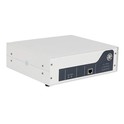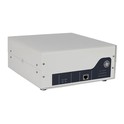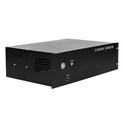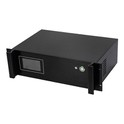Ultrasonic waves are sound waves with a frequency of more than 20 kHz beyond the human hearing range. The propagation of ultrasonic waves depends on elastic media. When they propagate, the particles in the elastic medium vibrate and transfer energy through the medium in the direction of ultrasonic propagation. This wave can be divided into longitudinal waves and transverse waves. In solids, both can be transmitted, while in gases and liquids, only longitudinal waves can be transmitted. Ultrasonic waves can cause particle vibrations, and the acceleration of particle vibrations is proportional to the square of the ultrasonic frequency. Therefore, ultrasound of tens of kilohertz will produce a huge force. When strong ultrasonic waves propagate in liquids, acoustic cavitation will occur due to nonlinear effects. The shock wave emitted when the cavitation bubble suddenly closes can generate thousands of atmospheric pressures around it, and the direct and repeated impact on the dirt layer will, on the one hand, destroy the adsorption of dirt and the surface of the cleaning parts, and on the other hand, it will cause the destruction of the dirt layer and detach from the surface of the cleaning parts and disperse them into the cleaning liquid. The vibration of bubbles can also scrub the solid surface. Bubbles can also "drill" into cracks to vibrate and cause dirt to fall off. For greasy dirt, due to ultrasonic cavitation, the two liquids are quickly dispersed and emulsified at the interface. When the solid particles are wrapped in oil and adhere to the surface of the cleaning parts, the oil is emulsified and the solid particles fall off. The cavitation bubbles will cause the liquid itself to produce a circulation during the vibration process, which is the so-called acoustic flow. It can cause a high velocity gradient and viscous stress on the surface of the vibrating bubbles, which promotes the destruction and shedding of dirt on the surface of the cleaning parts. The high-speed micro-jet generated by ultrasonic cavitation on the surface of solids and liquids can remove or weaken the boundary dirt layer, corrode the solid surface, increase the stirring effect, accelerate the dissolution of soluble dirt, and strengthen the cleaning effect of chemical cleaning agents. In addition, ultrasonic vibration causes a large vibration speed and acceleration of particles in the cleaning liquid, which also causes the dirt on the surface of the cleaning parts to be frequently and violently impacted.
May 12, 2024
What is the principle of ultrasonic cleaning?
Send Inquiry






